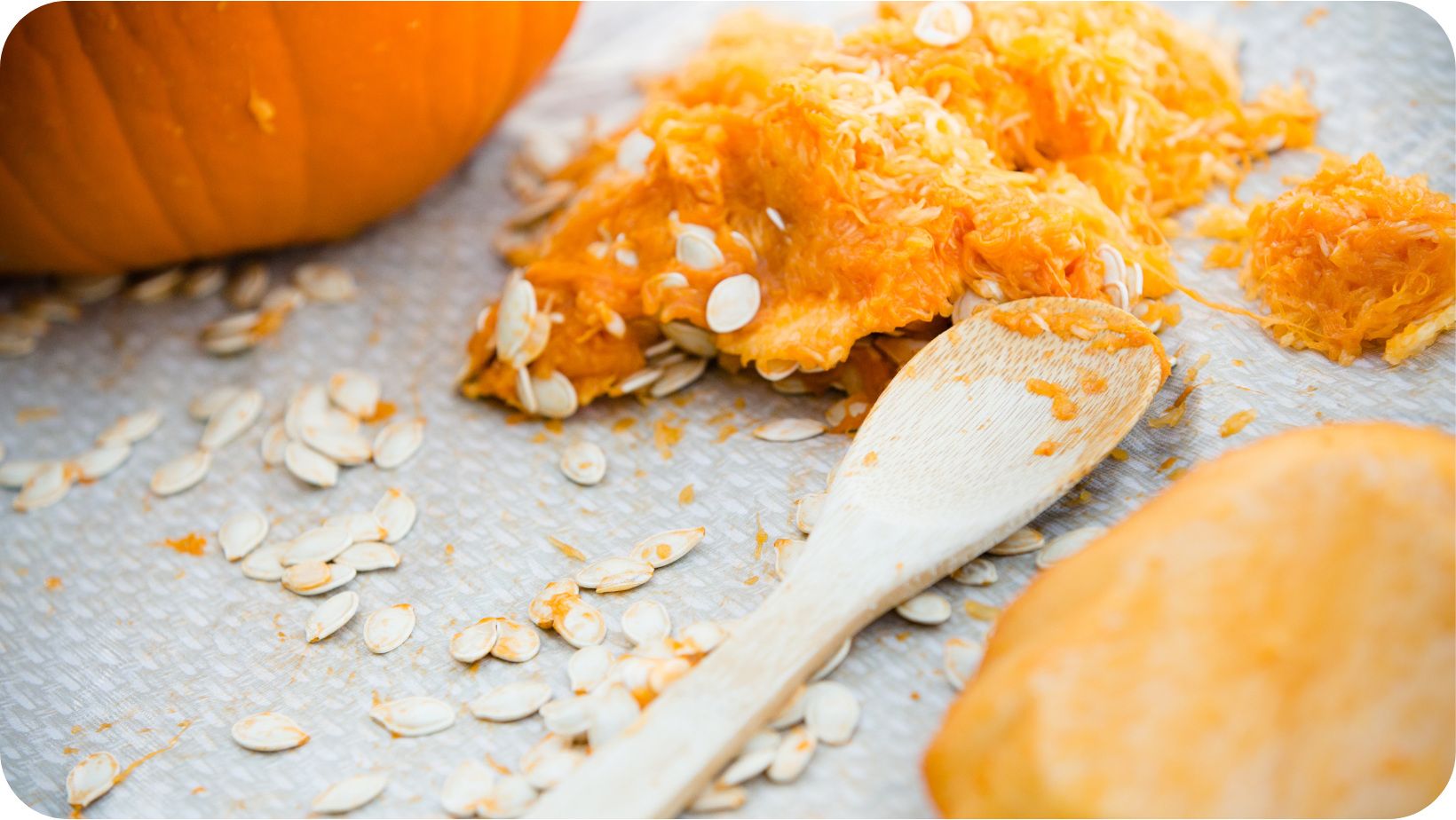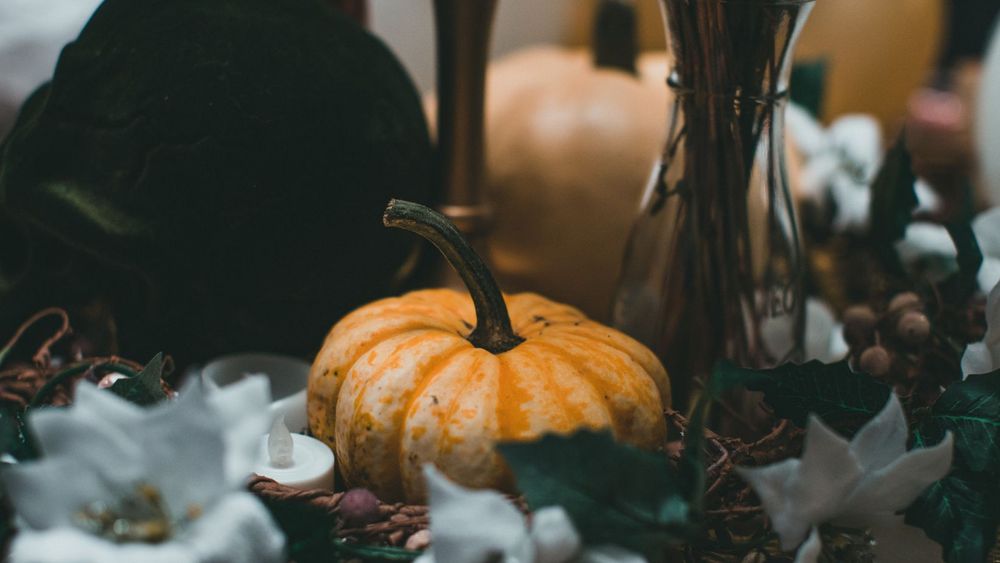Halloween’s origins: Vegan-friendly Samhain traditions
Halloween has many different names across many different traditions: All Hallows Eve, Night of the Living Dead and Old Hallowmas to name a few. Yet, interestingly, Halloween’s origins have been documented to have originated in the ancient Celtic festival of Samhain, one of many Sabbats that pagans celebrate in the Wheel of the Year, an ancient calendar system rooted in nature, giving thanks for the seasons and all that they provide us with. Samhain (a Gaelic word pronounced “SAH-win”) is the third and final harvest within the Wheel of the Year where traditionally, people would give thanks for the harvest, and say farewell to the summer before welcoming in the winter months with a mix of Samhain traditions and rituals.
It is said that on the night where summer meets winter, the veil between worlds is at it’s thinnest, allowing the opportunity for spirits to slip through and visit lost loved ones, on the condition that they return to the land where spirits reside before the sun rises on the next day, and the veil between worlds is closed once more. Spooky to some, beautiful to others. Suffice to say, there is a lot more to this prominent date in the Gregorian calendar than what we see on television shows or in movies.
So how did Samhain become Halloween, a holiday now celebrated across the globe with fancy dress costumes, trick or treating, and watching your favourite horror flick with friends?
It is documented that during the 8th century, Pope Gregory III designated November 1st as All Saints Day, a day dedicated to the worship of saints, and that holiday incorporated some of the pagan traditions of Samhain. The evening before All Saints’ Day was aptly called All Hallows’ Eve, an evening to worship the saints, and the following day, All Souls’ Day, a day to worship those who have passed.
Looking at the history of Halloween’s origins through a vegan lens, many Christians historically abstained from meat on All Hallows' Eve, opting instead to eat certain vegetarian foods including apples, potato pancakes and soul cakes. With that thought in mind, here are some vegan-friendly Samhain rituals the whole family can enjoy for a fun-filled Halloween.

RonomanJR/Canva Pro
Pumpkin carving
A tradition many already practise, believed to be Celtic in origin. A simple Samhain ritual affordable to most households to keep unwanted spirits at bay, and that is great fun for all ages. Simply cut the top off a pumpkin, scoop out the insides, carve in a design of your choice, then light a candle and place it inside your ‘lantern’ on the eve of Halloween. It is said to keep unwanted souls at bay.
Fun fact: Some tell the tale of Stingy-Jack, a man in cohorts with Satan himself, there are many variations of his tale, but the end result is the creation of Jack O’ Lanterns.
Samhain offering: Take your unwanted pumpkins to woodland areas after 31st October has passed, and leave for any wildlife that passes, they’ll happily gobble it up and it also acts as a natural dewormer for our animal friends.
Apple bobbing
Another popular Samhain tradition that’s fun for all ages is apple bobbing. In Celtic traditions apples are a sign of fertility and abundance. During frivolities on the eve of Samhain people would try to bite into an apple bobbing in water, and the first to take a bite would be the next in line to marry. To try this at home simply fill a large bucket with water and get dunking.
Fun fact: If you cut into an apple sideways, you will find a pentagram, a symbol prominent throughout history and often used as a sigil for protection and abundance, often associated with witchcraft and prominent within Wiccan rituals and rites.
Samhain offering: Keep the seeds and get planting. Nature is struggling and apples are a great food source for many wild animals and insects.
Honouring the dead
Perhaps one of the most sought after aspects of this tradition is the opportunity to make contact with lost loved ones. The Celts were firm believers that on the night where summer ends and winter begins, spirits roamed freely as the veil between worlds was at its thinnest. This is the perfect night to write a letter to someone you’ve lost, light a candle in their memory, or for those brave of heart, try to connect with them through divination.
Fun fact: Pagans would often leave spirits offerings of hospitality, for example; those that harvested grain, would create a corn dolly. Scary to some, endearing to others!
Samhain offering: Leave a dish with a lost loved one's favourite food out overnight. If it’s gone in the morning perhaps they received it, or you’ll have given a wandering fox a full tummy on a cold night.
Trick or treating
Perhaps the most well known of Samhain traditions and rituals is that of trick or treating. And whilst pagans did not partake in this particular activity, it is pagan in origin. On the night where spirits roamed free, people would often don a disguise of their own so as not to come into contact with any evil spirits that may have crossed over. That combined with the tradition of honouring the dead with food, has since become the tradition enjoyed today.
Fun fact: The first ever trick or treaters would visit the houses of wealthy families and receive pastries called soul cakes in exchange for a promise to pray for the souls of the homeowners’ dead relatives. Children later took up the practice and it has since evolved into the most prominent tradition associated with the 31st of October.
Samhain offering: Along with offering sweet treats, add a few fruit options in your bowl, you’ll be surprised how many children take them!
We wish each and every V-Lander a very vegan Halloween and a Blessed Samhain, whichever way you choose to spend it. Here’s some vegan trick or treat sweets to enjoy, and chocolate bars to add to your shopping list to stock up for the night, and embrace the fact that any holiday can be a vegan one.
